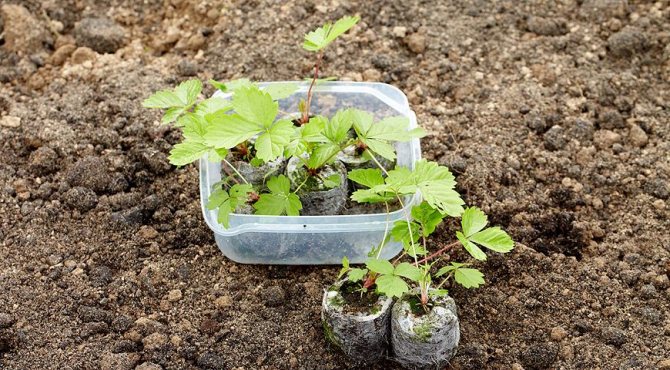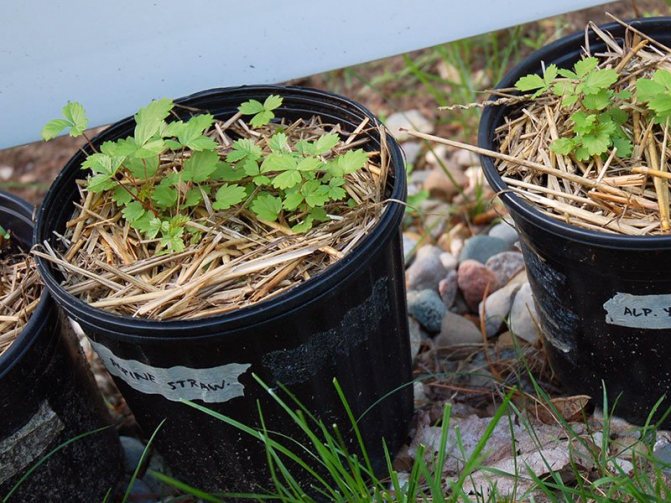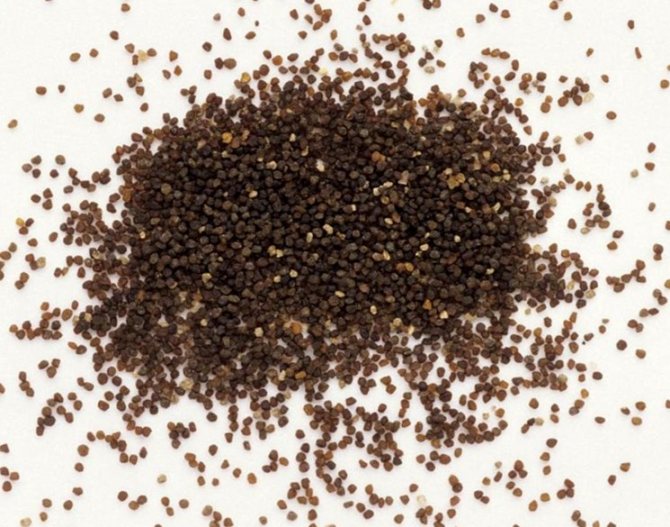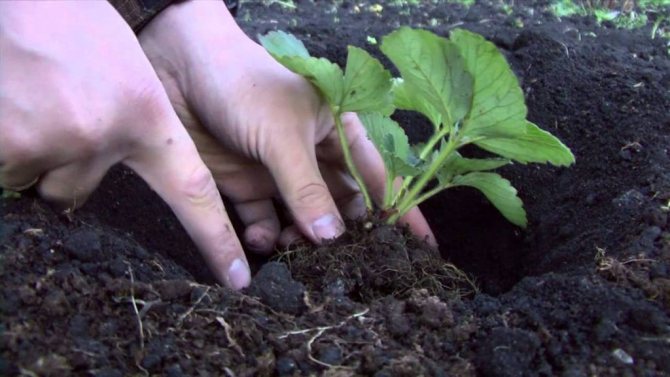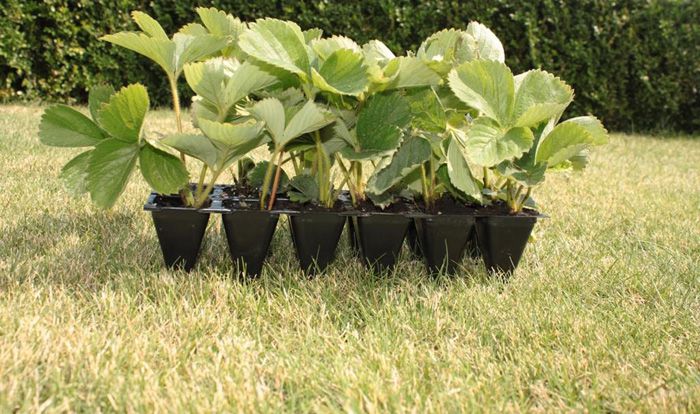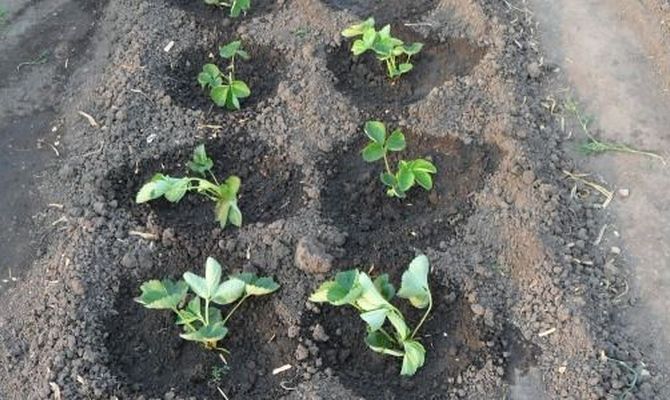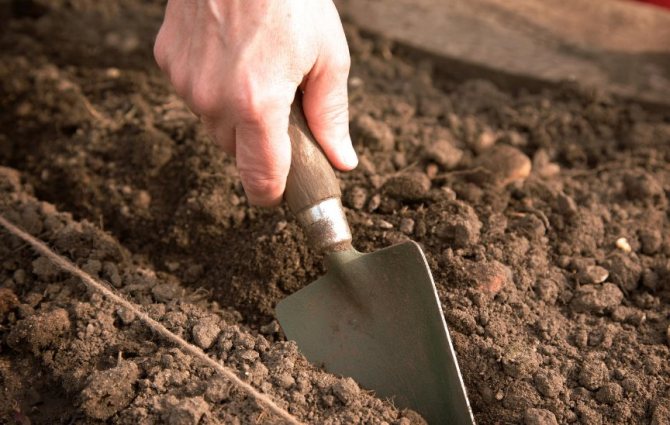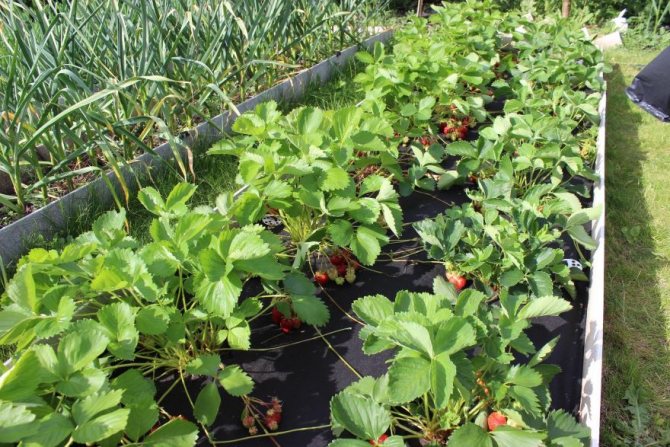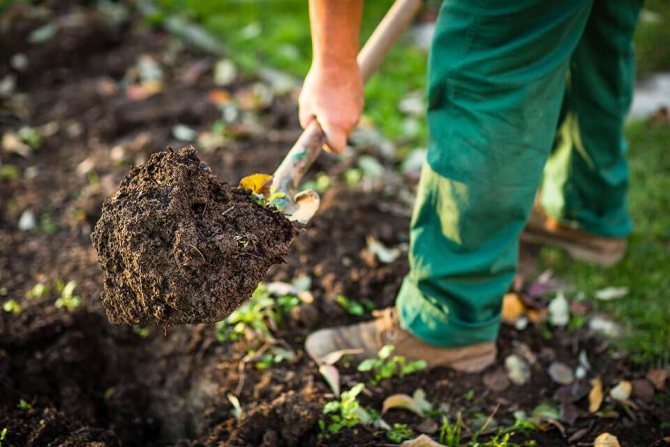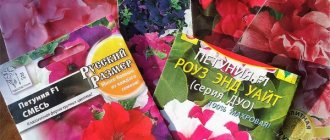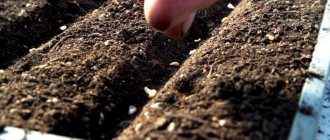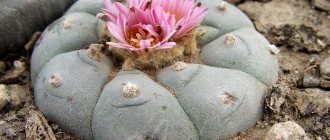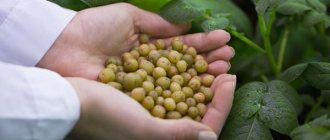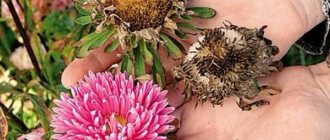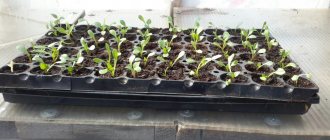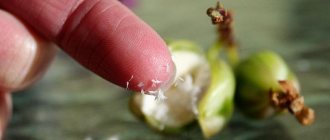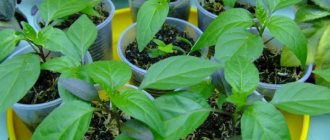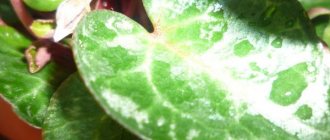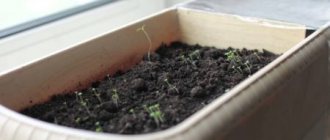Category: Fruit and berry plants
While there is snow in the garden, a real gardener does not idle, but prepares for the next spring-summer season - he buys seeds and fertilizers, repairs garden tools, lays seed for stratification ... But you never know what an amateur gardener has to do! Indeed, in addition to all, lately it is necessary to look more and more often on the Internet in search of the necessary information, since already in February it is necessary to start sowing seeds of garden and horticultural crops for seedlings. In our articles, we decided to combine all the necessary information on the most popular crops so that you do not have to collect the necessary information bit by bit from different sites.
In this article, we will talk about how when to plant strawberry seedlings for seedlings, how to grow strawberry seedlings at home and where to buy strawberry seedlings if you cannot grow them yourself. We will try to answer all the questions on this topic that you asked us.
WHY TO GROW STRAWBERRY SEEDS FROM SEEDS
Garden strawberry is a perennial plant from the Pink family, it does not occur in the wild. With age, yields fall, diseases accumulate, and the soil is depleted. Through the cultivation of seedlings from biological seeds, the population is renewed and the beds are healed.
In the first year, strawberries are gaining strength, in the second and third years they bring the greatest harvest. In the fourth year, the harvest declines. In the fifth year, the strawberries are removed, and the bed is freed up for other crops. Plant young plants regularly to maintain the cycle.
Shops for gardeners offer ready-made strawberry seedlings at a price of 250-300 rubles per plant. Pensioners, who make up 80% of summer residents and gardeners, cannot afford such expenses.
Grandmothers selling inexpensive seedlings on the market will not guarantee that the strawberries are varietal and have not degenerated, that this is the first shoot from the mother plant. Buy a pig in a poke, waste time without getting the coveted harvest.
My costs for planting seedlings were:
- Soil - 250 rubles, 50 liters
- Seedling set - 200 rubles, 2 pallets and 20 pots
- Seeds "Strawberries Flavor of Summer F1" - 68 rubles, 4 pieces in a package
- Seeds "Strawberry Nastenka F1" - 68 rubles, 20 pcs. packaged
- Seeds "Strawberry Sweet Tooth F1" - 29 rubles, 10 pcs. packaged
- The sprayer and phyto-lamps are reusable, left over from previous seasons.
Total 615 rubles, of which 200 for reusable pots. The price of one strawberry seedling is 250 rubles as of 2020 in Novosibirsk. When planting 10 seedlings, the cost of growing seedlings will be more than compensated.
When planting seedlings with seeds, it will be known what kind of variety it is and with what characteristics. You can choose the types of strawberries, so that drought-resistant and moisture-resistant varieties grow at the same time. Then it makes no difference whether the summer will be hot or rainy. You will not be left without a harvest.
Novice gardeners are stopped by the horrors that write on the Internet about growing strawberries. Seed selection, soil preparation, stratification, sowing under snow, cotton swabs with seeds in the refrigerator ...
In fact, to achieve a result, only three components are needed:
- humidity
- heat
- shine
Seed preparation for sowing
Before sowing, you must place the strawberry seeds in 0.5% solution of potassium permanganate
... After that, rinse the seeds well in clean water.
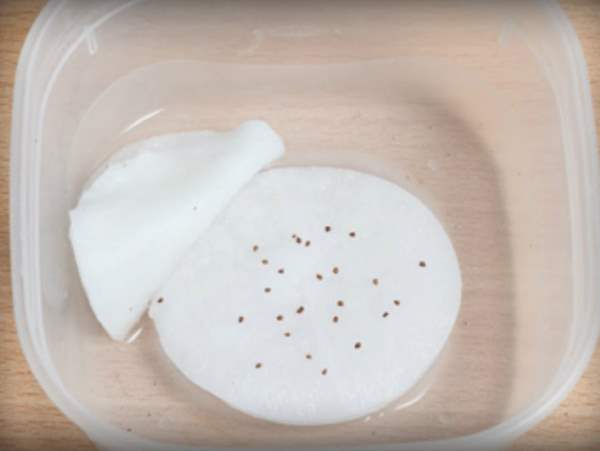
The next step will be stratification
- put the seeds on damp cotton pads or cloth. Put the different varieties separately. Put all the seeds in a container, close the lid and put in a dark place for 2 days.
Then send the seeds in the container to the lower shelf of the refrigerator for 2 weeks. Seeds should be regularly ventilated and sprayed with water.
Dry the seeds a little before sowing.
Back to the table of contents
WHERE TO BUY AND HOW TO CHOOSE STRAWBERRY SEEDS AND STRAWBERRY BY VARIETY
The seeds are sold in specialty stores and garden departments in large hypermarkets. Branded garden stores usually sell the products of only one agricultural complex, which reduces the choice of options.
Large producers and suppliers carry out the delivery of seeds and seedlings by mail, which is convenient for residents of remote areas where there is no choice of specialized stores. A catalog for ordering by mail with a detailed description of the varieties.
When choosing seeds, read the description of the variety, paying attention to the following details:
- Berry weight, from 2.5 to 25 grams. There are varieties with a berry weight of 40 grams.
- Fruiting period
- Beardless
- Whiskered
- Date of manufacture and shelf life of seeds: Germination of old seeds tends to zero.
The larger the berry, the fewer seeds in one package.
Early, mid-ripening, late-ripening
Repairing strawberry - bears fruit all season, until frost.
Whiskerless strawberries - requires less care; for reproduction, an adult bush is divided into parts during transplantation, each of which will grow independently.
Weeding of the mustache is required so that there is no thickening of the landings. Already in the second year, due to the children, the garden will grow three times from the initial one. Only the first-order sockets closest to the mother bush should be left for divorce.
PLANTING TERMS OF STRAWBERRY SEEDS FOR SEEDLING
Strawberry seedlings are sown from mid-February to early April, 2-3 months before the end of the threat of return frosts.
Strengthened bushes are planted in open ground in May, early June. Such plantings will begin to bear fruit in the first year.
The second layer can be planted in June, for autumn planting of strawberry seedlings in open ground. The strawberries, which were planted in August-September, will have time to take root before frost and will overwinter safely.
In Siberia, autumn strawberries did not show any advantages over spring planting, so I refused to grow the second layer.
Growing strawberry seedlings at home
Soil for strawberry seedlings
The soil for strawberry seedlings should be loose and crumbly, but not oversaturated with fertilizers.
- Hazel (hazel): growing, planting and care, pruning and varieties
We offer you several options for soil for strawberry seedlings:
- three parts of compost or humus, three parts of garden soil and half of wood ash;
- two parts of sod land and one part of peat and sand;
- three parts of sand and five parts of humus;
- one part of coconut fiber and one part of vermicompost or humus;
- three parts of peat and sand and four parts of vermiculite;
- three parts of sand and one part of garden soil and humus.
After you thoroughly mix the ingredients, the soil should be disinfected - for 30 minutes, calcined in the oven at a temperature of 150 ºC, freeze or spill with a strong solution of potassium permanganate. After disinfection, the soil is placed in a warm place for 2-3 weeks so that bacteria useful for seeds appear and multiply in it.
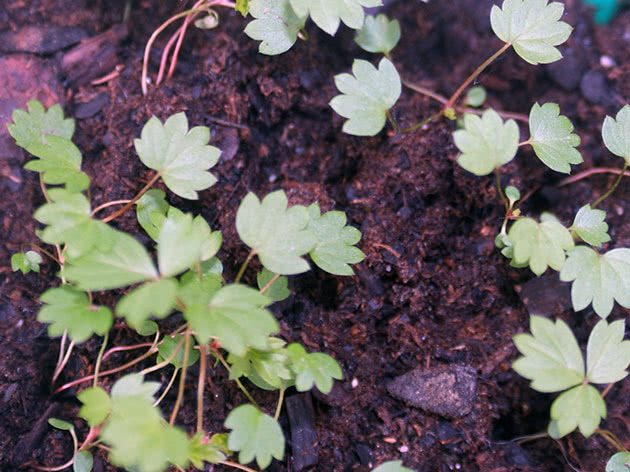

Growing strawberry seedlings from seeds
You can buy seed, or you can grow strawberries from your own collected seeds.The only exceptions are hybrid varieties - their seeds do not transmit varietal traits from generation to generation, so you will have to buy new seeds every time.
Growing strawberry seedlings begins with the disinfection of the seed. The seeds are placed for half an hour in a half-percent solution of potassium permanganate, then thoroughly rinsed in clean water and proceeded to stratification: they are laid out on a moistened linen napkin, covered with the same damp cloth, then a roll is rolled out of this "sandwich", placed in a plastic container, covered with a perforated lid and keep it warm for two days, after which they put the container for two weeks in the vegetable drawer of the refrigerator. Do not allow the wipes to dry out - ventilate the seeds and sprinkle them regularly with water, and dry them a little before sowing.
The seeds will be ready for sowing when they are swollen, but try not to let them peck, because small sprouts break off easily when sowing, and you will wait in vain for sprouting.
Growing garden strawberries - planting and care
Place the disinfected soil for seedlings in a container washed with a solution of potassium permanganate, compact and moisten it, spread the seeds on the surface in rows at intervals of 3-4 cm using a damp toothpick and do not cover them - strawberry seeds germinate in the light. Cover the container with a transparent plastic lid with small openings for air exchange and place it in a bright and warm place where direct sunlight does not fall - window sills of western or eastern windows are most suitable for such purposes.
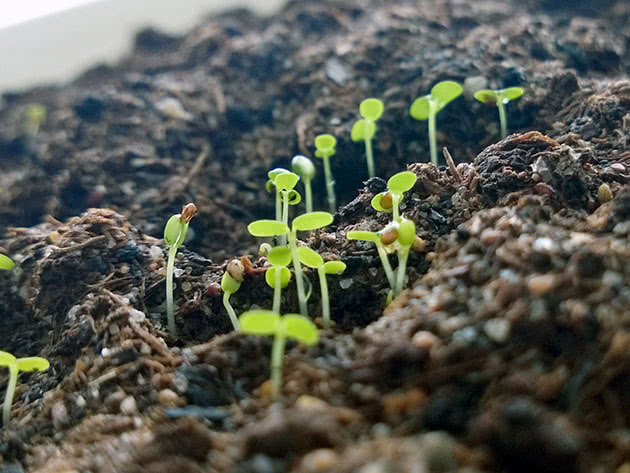

There is another method of sowing seeds, which allows you to combine sowing directly with the stratification of strawberry seeds. Disinfected seeds that have not undergone stratification are laid out in the way just described over the surface of dry soil, which does not reach the edge of the container by 2 cm, and a layer of snow is placed on top of the seeds to the edge of the container, after which the container is covered with a lid and placed in the refrigerator for two weeks. In the vegetable crate, the snow will gradually melt and pull the seeds into the soil, as it usually happens in the garden in spring. After two weeks, the container is moved to the windowsill under a bright, but diffused light, but the lid is not removed until the first shoots appear.
How to grow strawberry seedlings in tablets
Seedlings of strawberries from seeds develop well in peat tablets. They are convenient in that you do not need to mess around with the preparation and disinfection of the soil, and you can skip the picking of seedlings.
Peat tablets are put into a container and poured with water so that they increase in size, after which the seeds that have undergone the disinfection and stratification procedure are laid out in tablets with a damp toothpick. To prevent moisture from evaporating quickly, the container is covered with a transparent lid, and then placed in a warm, bright place.
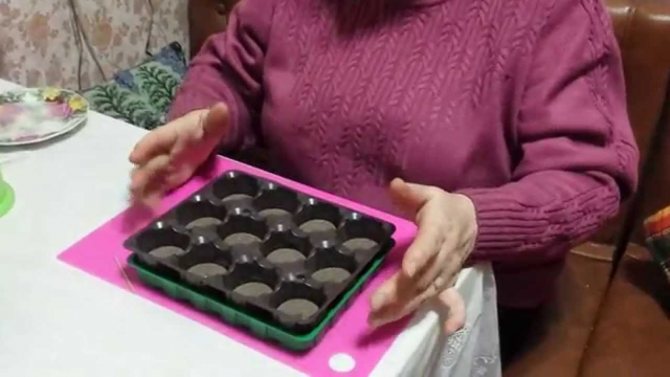

It will be necessary to ventilate crops daily and remove condensate from the lid, so that mold does not appear on the substrate, but if you suddenly find it, remove the mold and pour the fungicide solution over the area. The cover is removed as soon as the first true leaves begin to develop on the seedlings.
Frigo strawberry seedlings
In recent years, a new practice has appeared to dig out developed annual strawberry outlets of the first and second order for the winter, to store dormant bushes with an open root system in sealed packages at a certain temperature and humidity, and in the spring to plant these outlets on a garden bed. The advantage of frigo is that such strawberry seedlings quickly take root in the spring and grow, since during the winter, with proper storage, the normal biorhythms of plants are not disturbed.
Choosing at your discretion the timing of planting frigo, you can get the harvest by the planned date. In addition, frigo strawberry seedlings take up little space during storage.
- Hazel (hazel): growing, planting and care, pruning and varieties
Experts from the UK and the Netherlands, who developed this method of growing strawberries, have already completely switched to frigo seedlings, which are divided into three classes:
- class A - seedlings with a rosette diameter of 12 to 15 cm, usually forming no more than two peduncles;
- class A + - seedlings with a shortened shoot with a diameter of more than 15 cm, forming 2-3 peduncles;
- class A + extra - the diameter of this seedling is more than 20 cm, it has lateral horns and at least 5 peduncles.
There are frigo seedlings and disadvantages - it is difficult to determine the time of digging out the sockets and to maintain the required storage temperature (from 0 to 1 ºC) and air humidity (90%) at home. The disadvantages include the high cost of frigo, although gardeners claim that the price of seedlings is fully paid off due to its productivity.
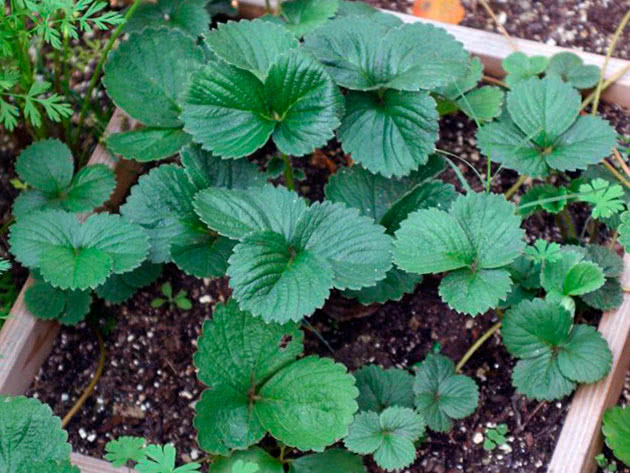

Strawberry seedlings in the greenhouse
Usually, seedlings of remontant strawberries are grown from seeds, as well as those varieties that do not form a whisker. You can get strawberry seedlings at home, and continue growing outdoors. Or you can plant mature seedlings in a greenhouse and grow strawberries in it all year round. We will tell you how to grow strawberries in a greenhouse in a separate article.
HOW TO PLANT STRAWBERRY SEEDS
For a better understanding of what this is about, watch the five minute video I made for this article, where I sow strawberries for seedlings.
Fill the pot or cup with earth, one cm from the top edge. Lightly tamp and water thoroughly. Use water for irrigation settled, at room temperature.
The land can be either ready-made soil from the store, or from your own garden. The main condition is that the soil is loose and homogeneous.
Pour dry strawberry seeds onto a moistened surface. As necessary, afterwards, spread the seeds evenly over the surface with a toothpick.
It is strictly not recommended to water, bury, deepen or sprinkle the seeds with soil immediately after planting. The plant will take root by itself, and watering at first will only wash out the seeds.
To create a microclimate, the pots are covered with cling film. Condensation will fall on the surface of the film in the morning and in the evening. This is how natural hydration occurs. The film should be removed only after the first shoots appear.
In the video, I showed how to wrap cling film around the pots, it is much more convenient to fix the film on the pot by pulling an elastic band for money on top.
Make sure that the earth does not dry out, if natural moisture is not enough, lift the film and gently water it without pressure, so that the seeds and earth are not washed away with water. Excess moisture is also detrimental to strawberries.
Diseases of strawberry seedlings and their treatment
With good care, strawberry seedlings do not suffer from diseases, but with chronic waterlogging, they can be struck by a black leg - rot of the root collar of seedlings, which manifests itself from the beginning of seed germination to the stage of development of 2-3 leaves. Against the background of high humidity for 4-6 days, the base of the stem turns black, softens, breaks, and the seedling lays down.
If the disease is massive, cut healthy seedlings into separate sterile containers in disinfected soil, place them in a warm place and protect them from direct sunlight. As soon as they take root, the temperature of the content can be lowered, and a fungicide (Fitosporin, Baktofit or Maxim) must be added to the water for the first watering.
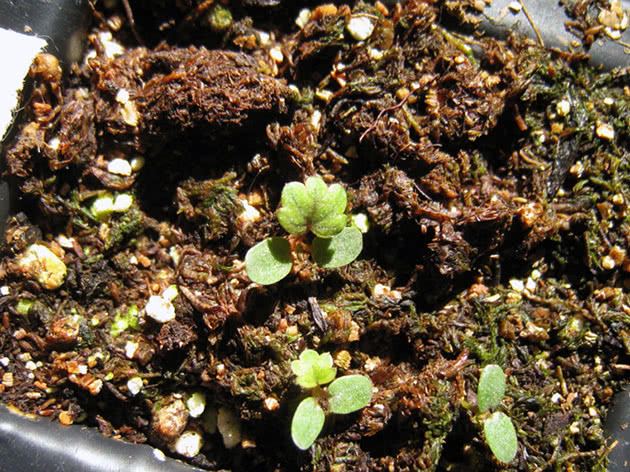

It is inspiring that seedlings growing in peat tablets practically do not get sick with a black leg, since the tablets are disinfected and impregnated with a fungicide.
Sometimes at home, seedlings can get sick with powdery mildew, and then a whitish bloom appears on its leaves and stems, which gradually darkens and becomes dense and brown. Affected plants stop growing and die. The reason for the development of infection can be:
- excess fertilizing with nitrogen fertilizers,
- sharp fluctuations in temperature,
- humidity.
In the fight against powdery mildew on strawberry seedlings, solutions of biofungicidal preparations prepared in accordance with the instructions are used - Alirin-B, Fitosporin, Gamair or Planriz.
Diseases and pests of strawberries and their control
In conditions of low humidity, spider mites can occupy strawberry seedlings, making small punctures in the leaves of the seedlings and sucking out cell juice through them. In addition, ticks carry incurable viral diseases, such as mosaics. Destroy pests with acaricide solution - Aktars, Aktellika, Karbofosa, Fitoverma.
WHAT TIME DO STRAWBERRY SEEDS
The strawberries were planted on February 21st and the shoots were not long in coming, ten days later, on March 3rd, the first green shoots appeared under the film. The seeds did not sprout evenly, the last shoots were at the end of April, two months after planting.
Shoots are easily mistaken for weeds. The cotyledons do not look like the usual tridents of adult seedlings.
The leaders of the informal competition were the varieties "Sweet Tooth F1" from Sedek. The seeds of the Aromat Leta and Kirgizka strawberries were not allowed in, but the roots have already begun to hatch.
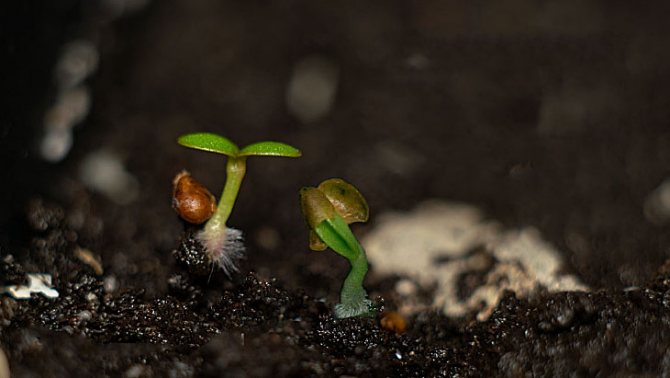

Each variety of large-fruited remontant strawberries hatched. The "aroma of summer" has a germination rate of 100 percent, all 4 grains in the capsule of the seed package have sprouted. The fact that the variety reproduces with a mustache is encouraging. The varieties "Sladkoezhka" and "Nastenka" partially rose, "Kirghizka" - together rose
The “Kirghizka” variety does not exist, I named strawberries that way, because the berry from which I picked the seeds was bought in the market from a Kyrgyz woman last summer.
After the seeds have sprouted, caring for strawberries consists in daily airing the seedlings, a film is removed from the pots for a day. In the evening, the film is returned to its place until morning. Ten days later, on March 13th, I completely removed the film so that the stems of the plants would not rot due to high humidity.
Every plant needs light to grow, and strawberries are no exception. Agronomists recommend 16-hour daylight hours, which is achieved by lighting with phytolamps. Phytolamps are sold in specialized stores and online stores.
The first years I did not have phytolamps, the seedlings also grew. Sowing without light is recommended for a couple of weeks later, when daylight hours increase.
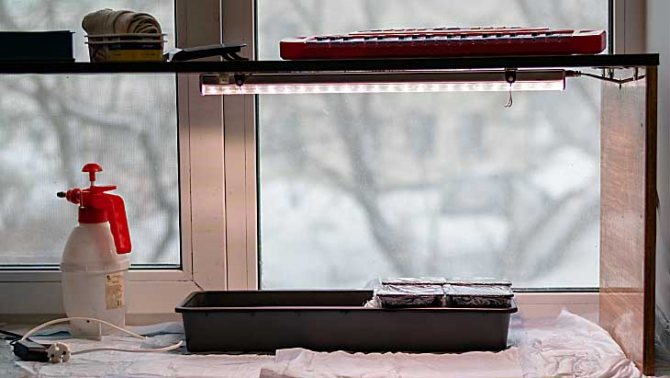

The second prerequisite is to control soil moisture. Do not allow the soil to dry out. Water the soil carefully, drop by drop, so as not to damage the young plants with pressure.
For these purposes, a pipette or a rubber bulb from a pharmacy is suitable. I water it myself with a garden spray, in which there is no pressure and water barely drips.
Sowing dates
Have you clearly decided that strawberries from seeds will appear on your plantation? Growing, dacha tricks will help you understand this process in detail. Experienced summer residents know that in this matter it is extremely important to guess correctly with the sowing dates. This is the key to a high harvest. If you want to grow seedlings from seeds for the purpose of sale, then sowing should be done in the middle or in the last decade of February. Saplings must necessarily grow with artificial lighting. But summer residents note that in the future this affects the intensity of strawberry growth. Such seedlings are less resistant to drought and viral diseases. Therefore, if you grow strawberries for yourself, then the seedlings should grow without artificial lighting. This means that the ideal time for sowing seeds is from March 5 to 10. If you sow earlier, the seedlings will die due to lack of natural light.


When to dive strawberries
Strawberry seedlings dive when 2-3 true serrated leaves grow. The seeds do not sprout evenly, so the pick is carried out as the seedlings grow.
Water the day before the pick, so that the soil dries up and you can dig up the strawberries and remove them along with a lump of earth. The root system during this period is poorly developed and easily damaged, so when transplanting, try not to expose the roots.
Strawberries dive twice. First time in small cassettes. In a month, the roots will grow, and the second time they are transplanted into half-liter pots. If you immediately plant it in large containers, then the roots will not have time to master the entire space, moisture will stagnate in the ground and the plants will begin to rot.
In order not to confuse where which variety grows, I glue strips of adhesive plaster on the hills, on which I sign the name of the strawberry.
When picking strawberry seedlings and planting them in a permanent place, make sure not to overlap the growing point with earth - the middle of the plant, from where the leaves diverge to the sides. Otherwise, the plant will die.
Video clip, how I dive strawberry seedlings:
Soil and pots for growing strawberries
I used to use plastic sour cream cups and disposable cups. This year I bought reusable containers for strawberries with an extruded bottom and a common pallet. Now I put a pallet with ten pots on the shelves and window sills.
The difference between pots and disposable cups is ease of maintenance. He pulled out the pallet with the plants for quick watering, then turned it around so that the seedlings, which were in the shade from the edge of the window sill, were in the light by the window.
The cups from the set have drainage holes. When the seedlings have grown, for quick watering, I pour water directly into a tray with cups, to a level of 1 cm. The earth absorbs moisture well.
If you use disposable cups, then before planting, pierce the bottom with them (with an awl, ikolka) for drainage so that excess water does not stagnate.
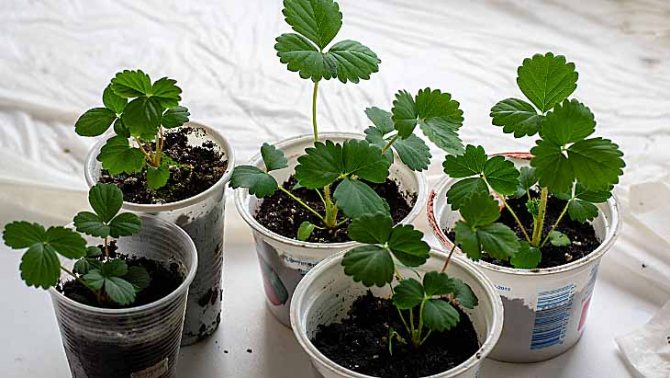

According to my observations, strawberries planted in a 0.5 liter cup grows 2-3 times larger than its counterpart in a 0.2 liter cup. Strawberries in 0.1l cups stopped growing until they were transplanted into a larger container.
I did not notice the difference between the ready-made soil and garden soil. The strawberries grew the same. The choice depends on your personal preferences, which is more convenient to harvest the soil in the fall or go to the store in winter.
In the northern regions, the garden soil is disinfected by low temperatures, the soil is left in bags on the street from autumn until the end of the Epiphany frosts. Two weeks before planting, the bags are brought into the house so that the earth warms up.
Personally, I liked using purchased primer more. Store soil is already ready for planting and does not require additional manipulations for disinfection and fertilization.
Strawberry seed stratification
Seeds placed for storage in the fall contain substances that block their development and prevent the activation of growth mechanisms before spring comes. If the germination inhibitors were not blocked, the seeds of many plants would rot after thaws that occur in late autumn and winter.
To start the growth mechanisms, you need to place the seed in conditions that simulate winter. This is done, a stratification procedure is carried out.
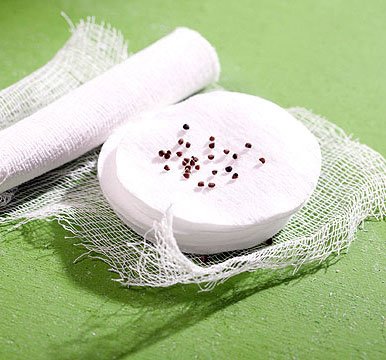

During stratification, seed material is stored in a humid environment, at temperatures from zero to plus four degrees, after which chemical processes are activated that ensure growth. Seeds with a low percentage of germination and a hard, durable shell are subjected to aging at a low temperature. For strawberry seeds, this period ranges from 2 weeks to one and a half months. Seed material, not exposed to cooling, germinates for a long time, it has low germination and weak shoots.
How to stratify in the refrigerator
Keeping seeds in your home refrigerator is a reliable way to boost strawberry growth.Stratification requires a small food container with a lid, a plastic bag with a lock, a sheet of white paper, two cotton pads, a plate of cold water, and a bag of seeds. The work is carried out in the following order:
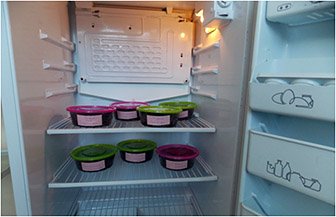

The seeds are poured onto a paper sheet.- A cotton pad is dipped in water and placed on a flat surface.
- The seeds are carefully poured onto the disc so that they do not touch each other. The second cotton pad is dipped in water, without squeezing, put on the first one on top of the seeds.
- A "sandwich" of two discs is placed in a plastic bag, the latch is closed.
- The bag is placed in a food container, covered with a lid and placed in the refrigerator.
- Once every two weeks, the container is removed and opened. Then open the bag latch. After a minute, the bag is closed, put back in the container, closed with a lid and put back in the refrigerator.
In a household refrigerator, the operating temperature is 2-10 degrees. Before laying seeds for stratification, the temperature should be adjusted so that the storage location (top shelf, door) is no more than plus 4 degrees Celsius. You can measure the temperature using a thermometer designed for the street or room.
Pelleted seeds cannot be stratified.
Early May, leaving in the garden
Last year, the beginning of May turned out to be warm and I went to the garden to check my plantings. That year I grew two varieties of remontant strawberries from seeds - "Irishka" and "Lizonka" from agro
Both varieties overwintered well, without additional shelter. Let me remind you that I grow strawberries in Western Siberia. Bushes planted in spring have grown well in a year. The seedlings planted in the fall are all rooted, but the bushes are not large in size, in comparison with those that are six months older.
“Irishka” is a mustacheless variety, cut off old dry leaves and stalks with scissors. "Lizonka" is a mustachioed variety, I left only the first order children, those closest to the parent bush. All the same, the children have grown into two more of the same beds. He quickly dug up a garden bed, dug up strawberry children with soil with a garden spatula - and to a new place of residence.
In size, the babies were not inferior to the mother bush, they have a powerful, well-developed root system. It is recommended to leave the very first shoots from the mother bush, because on the children of the second and third order, degeneration begins and the properties of the mother bush are lost.
After a well shed planting, old and new. 5 liters of water per bush. Strawberries need moisture now, because the bushes are beginning to lay the future harvest.
By May 5th, flower stalks began to appear on both varieties. If you compare the berries "Irishka" and "Lizonka" with each other, then the berries of "Lizonka" are dark red, denser and twice as large as those of "Irishka".
The most important difference made by my son, "Lizonka" gives sweet juicy berries, the "Irishka" variety gives smaller and pink berries with sourness. In this connection, Cyril, the Irishka variety, was thrown away, saying that it was necessary to plant Lizonka.
I don’t like to weed weeds, and secondly, I’m just too lazy to do it. I tried to solve the problem of weeds in strawberries in two ways - I treated one area with herbicides, on the second I carefully weeded everything and covered it with sawdust. Pine, layer 4-5 centimeters. I poured it gently under the leaves and around so that the growth point did not fall asleep. Sawdust - where the wood is cut into planks, is distributed free of charge.
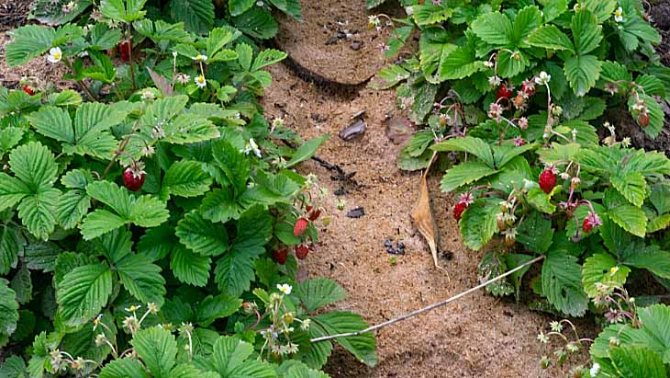

In the spring, the area treated with herbicides is all green, there is nowhere to go from the grass. You can't even see strawberry bushes, everything is overgrown. The area covered with sawdust is clean, several dandelions made their way, which he quickly pulled out.
Landing too often was my mistake. The overgrown bushes have become cramped and there is not enough space for airing. This time I planted a berry in the garden in two lines, alternating in a checkerboard pattern.
Is it possible to plant different varieties of strawberries nearby in neighboring beds?
When I was just gaining experience in growing large-fruited garden strawberries, on the Internet on large sites I came across the opinion that different varieties of strawberries should not be planted next to each other.
The main reasoning was that bees will pollinate different varieties of berries, which will negatively affect the harvest. All plantings will lose their varietal characteristics.
Having become interested in this theory of cross-pollination, I turned to local beekeepers with the question of how far bees fly. It turns out that the flight of a bee from the hive is up to 5 km, during honey collection, bees collect pollen at a distance of up to three kilometers.
It turns out that there is no cross-pollination, different varieties need to be planted at a distance of 3 kilometers from each other. Who can afford a three-kilometer-wide row-spacing in a vegetable garden ?!
Strawberry is a bee-pollinated plant. No bees, no harvest. I sow a honey plant around the edges of the garden, literally a square meter of land - phacelia. I sowed in three terms. Phacelia also bloomed in three terms. And all summer my beds were buzzing with bees and bumblebees.
I don’t know whether there was cross-pollination or not, but the different varieties in the neighboring beds did not influence each other in any way.
And my main counterargument in favor of the proximity of different varieties of strawberries is that we plant HYBRIDS. The letter 'F1' on the seed package means it is a hybrid. The seeds from the resulting crop will not have the properties of the parent bush. It makes no difference whether there was cross-pollination or not.
HARMFUL TIPS FOR GROWING STRAWBERRY
With a neighbor about whom I talked at the beginning of the article, we went to the store together, bought land and seeds from one counter. I told him for an hour, the information that you read above.
However, the same evening my neighbor called me, it turns out that I am not growing strawberries correctly. He read it on the Internet as it should, and now his harvest will trample.
And I planted the seeds in my own way. My strawberries grew quickly, and in the first summer they bore a harvest. The neighbor waited until autumn and gave up - not a single seed sprouted.
I wondered what a neighbor found about strawberries on the Internet. It turned out that I don't do a lot of things from what my neighbor did:
- didn't put the seeds in the refrigerator
- did not germinate the seeds beforehand
- did not cover the surface of the earth with a layer of snow
- did not spread the seeds on the snow
- did not sprinkle the snow with the seeds with a layer of sand
As practice shows, strawberries grow well without all these dances with tambourines. It is recommended to fall asleep with snow so that the seeds can be seen better and what exactly happens in nature. But the seeds from the soil already differ in color, but in nature, garden strawberries do not grow.
Another popular but very harmful advice is instructions for harvesting seeds yourself. I harvested the seeds myself several times. It is not difficult and germination is good. Only an incomprehensible grass grows, very powerful and without berries.
“Kirghizka” is my last experience, I will not spend more time and energy on my strawberry seeds. It's a shame that my "Kyrgyz" grew twice from cheap store seeds.

